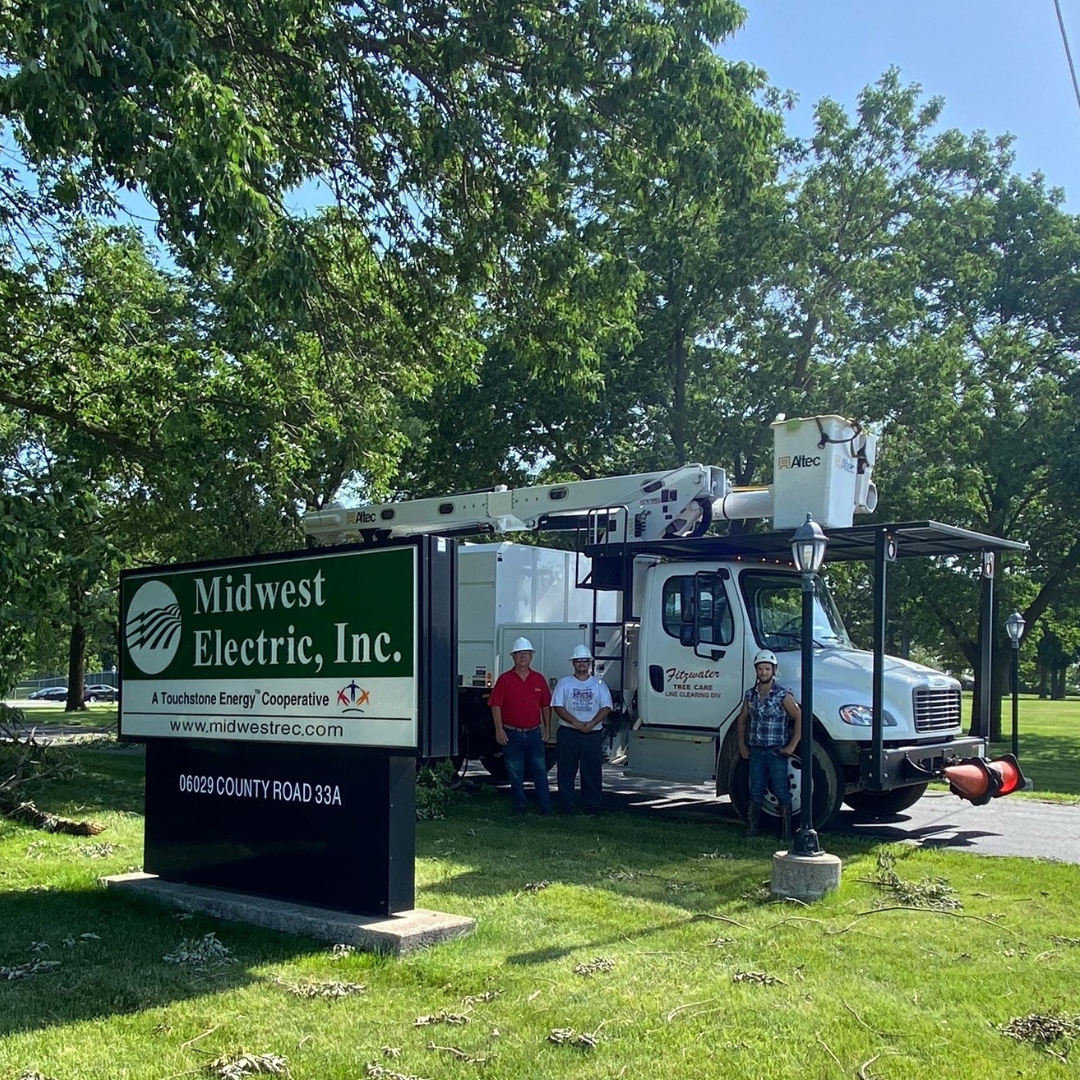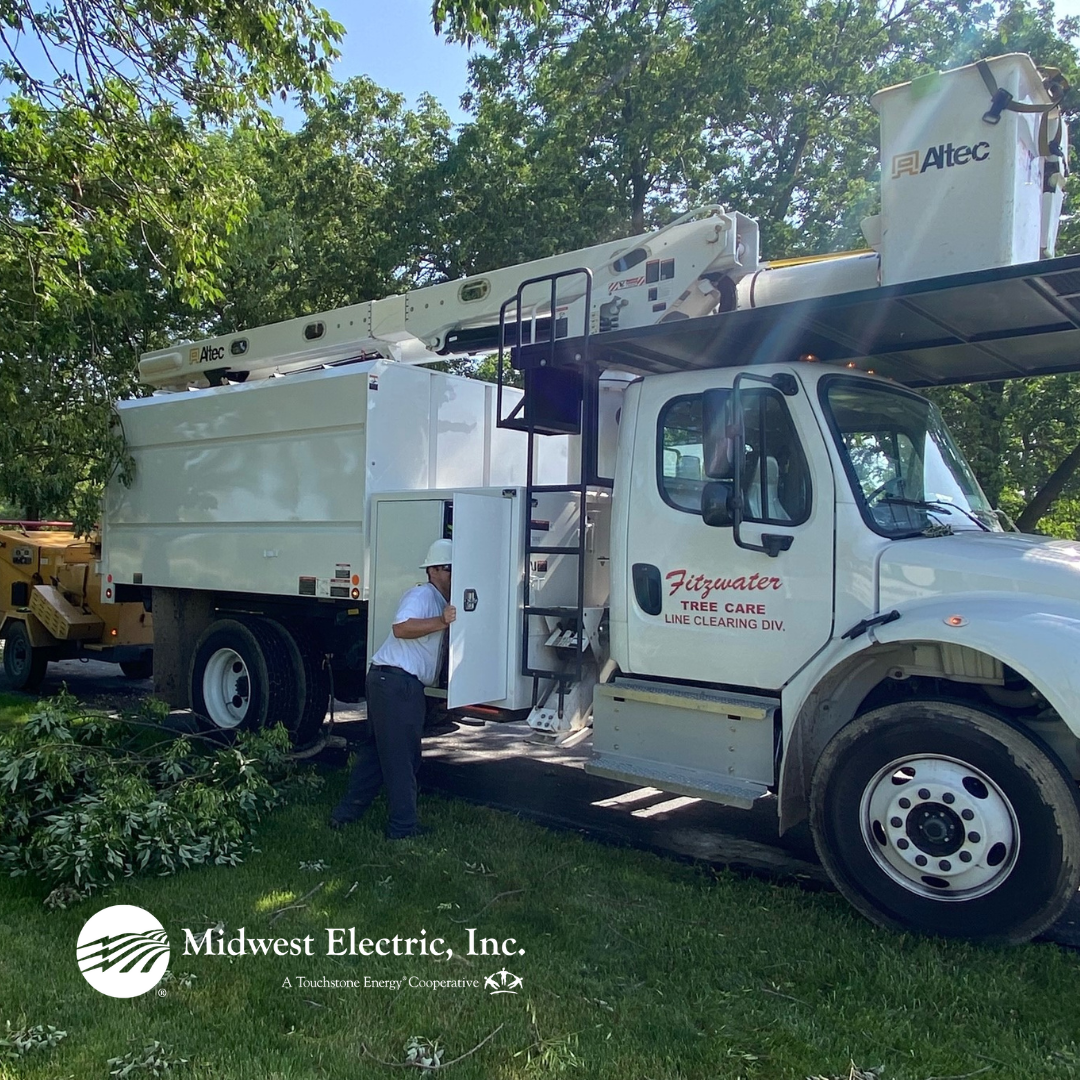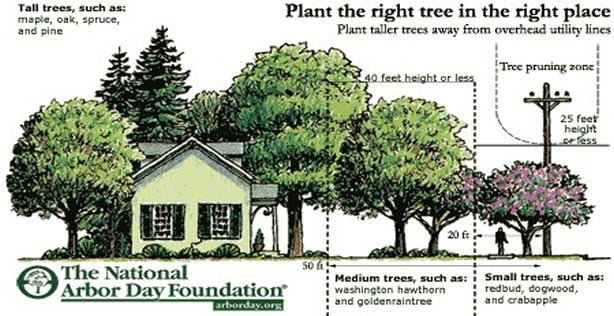Trees and Power Lines
Midwest Electric loves trees just as much as you do. But sometimes, they can create hazards with our power lines.
Click HERE to see the 2025 Tree-Trimming Map.
Trees clean the air, reduce atmospheric carbon dioxide and, when positioned strategically, protect buildings from wind and sun, which can have a noticeable impact on reducing the energy needed to cool and heat the buildings. Unfortunately, when a tree grows too close to a power line, it not only has the potential to cause wide-ranging power outages, but can also be a life-threatening danger as well.
Trees can be a contributing factor, if not a direct cause, of as much as fifty percent of power outages. The problems can develop suddenly, such as when branches break during wind or ice storms, or over time through natural growth patterns, where tree branches may begin to crowd and rub against power lines. Trees that are anywhere near a power line can also represent a real threat to children who may be tempted to climb them, or to home owners who may try to tackle a trimming job on their own. Tree limbs and branches that come in contact with power lines may themselves become energized.
To improve power reliability and reduce outages and safety hazards, we maintain a vigilant program of tree and brush removal and trimming. Professional tree contractors are used, who are as concerned in maintaining the health of the trees as they are in ensuring adequate clearance around power lines. Trimming is performed according to directional pruning techniques that meet the standards and practices of the National Arborist Association, the American Association of Nurserymen, and the Ohio Department of Natural Resources.
We notify affected members via e-mail or letter before trimming. Here is a copy of the letter.


Meet our Tree Trimming Contractor: Fitzwater Tree Care
Directional Pruning
Directional pruning is intended to guide new growth away from power lines. Entire limbs or portions of limbs that are growing toward the lines are removed back to the main branch or trunk—the point where they would naturally shed if the limbs were to die from natural causes. This leaves the natural defense system of the tree intact, and minimizes the impact on the tree crown. In a few situations, the recommendation may be made to remove a tree, rather than try to trim it. These situations include: when a rapidly growing tree is directly under a power line, when a tree is leaning toward high-voltage power lines, or when a tree has a structural defect that increases its risk of falling.
Directional pruning may not look as appealing as the old method of simply rounding off the top of the tree, but it is far better for the long-term health of the tree and directional pruning is recommended and approved by the National Arborist Association, the American Association of Nurserymen, and the Ohio Department of Natural Resources.

If you’re considering the addition of any new trees to your landscape, give careful consideration to particular tree species and how they may impact any power lines on your grounds. While no trees should be planted in the vicinity of high-voltage transmission lines, there are many trees that, under normal conditions, will not grow tall enough to interfere with distribution lines. Some of these trees can also be attractive additions to your landscape and generally grow to mature heights of twenty feet or less:
- Crabapple
- Flowering Dogwood
- Hawthorne
- Bristlecone Pine
- Common Juniper
- Trident, Amur, Paperback, and Tartarian Maples
- Rose Acacia
The following species, however, are particularly tall growing, and should be planted no closer than sixty feet from distribution lines:
- Oak
- Colorado Blue Spruce
- Silver and Norway Maples
- Most pine species
Midwest Electric has a special offer to help you plant trees in the right place this spring:
- We will reimburse you for buying a tree seedling packet from your local Soil & Water Conservation District (SWCD)
- This is limited to the first 300 members
- Limit $15 reimbursement
- Your purchase must be from the SWCD. Purchases from other sources will not be reimbursed.
- Send us your receipt/proof of purchase
- The reimbursement will be in the form of an electric bill credit.
Instructions
Please contact your local SWCD. Typically, they require an order form that can be mailed or downloaded from their websites. Plus they require payment when your order is placed.
County SWCDs and order deadline:
- Auglaize County SWCD: 419-738-4016
- Mercer County SWCD: 419-586-3289
- Van Wert County SWCD: 419-238-9591
- Darke County SWCD: 937-548-1752
- Shelby County SWCD: 937-492-6520
- Putnam County SWCD: 419-523-5159
Delivery is normally mid-April.

